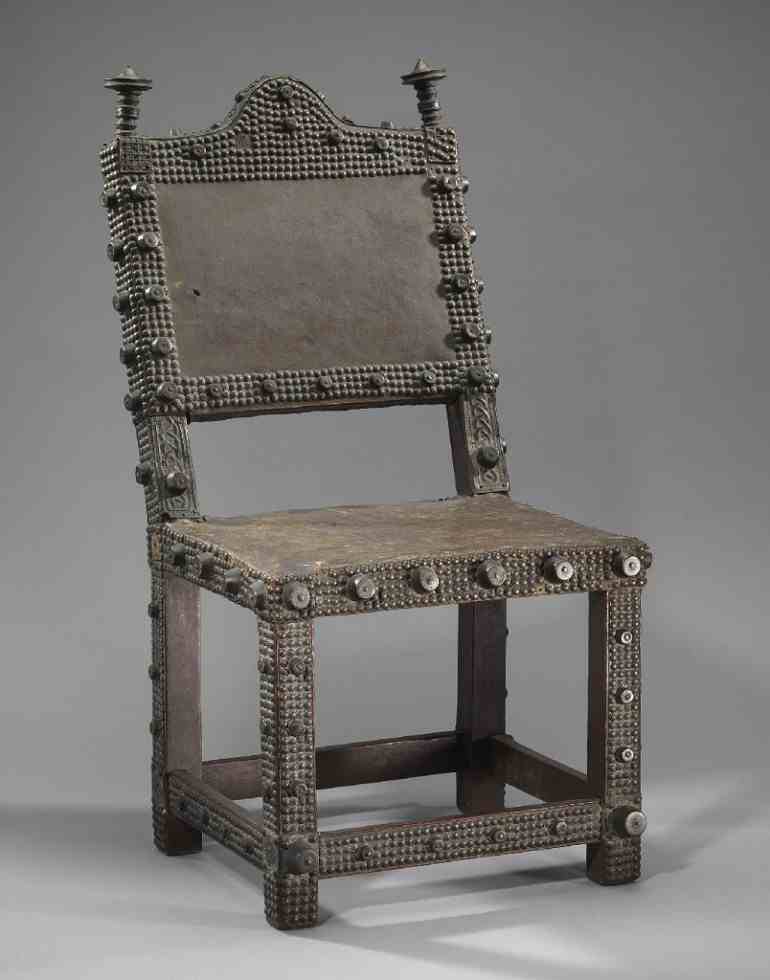ART NEWS
A royal stool ornament (before 1874). Photo courtesy of Fowler Museum at UCLA/Gift of the Wellcome Trust.
There is singing and dancing across Ghana as the nation celebrates the return of seven royal artifacts looted 150 years ago by British colonial forces.
BY KAZEEM ADELEKE, ARTCENTRON
In a jubilant display of cultural heritage and historical significance, Ghana rejoices as seven royal artifacts, looted 150 years ago by British colonial forces, return to their rightful home. This monumental event marks a significant step towards acknowledging and rectifying the injustices of the past, as treasures plundered during the Third Anglo-Asante War are repatriated to their origins.
The saga of these stolen treasures traces back to the 19th century, amidst the tumultuous backdrop of colonial expansion and conflict. British forces, under Garnet Joseph Wolseley, orchestrated a ruthless raid on Kumasi, the capital of the Asante kingdom in present-day Ghana. This brazen act of aggression, occurring during the Third Anglo-Asante War, resulted in the pillaging of invaluable artifacts that held profound cultural and historical significance to the Asante people.
Led by Captain J.E. Audley Harvey, the British expedition seized a myriad of treasures, including an elephant-tail whisk, a regal ornamental chair, gold stool ornaments, and precious jewelry. These artifacts once cherished symbols of Asante royalty and heritage, were forcibly taken from their rightful owners, leaving a painful void in Ghana’s cultural landscape.
Restitution: An Ethical Imperative
After being looted from British-colonized Ghana in the 19th century, the artifacts were transferred to the Fowler Museum at the University of California, Los Angeles (UCLA) in the 1960s, where they were until recently. In a landmark gesture marking 150 years since the looting of prized artifacts, the museum decided to repatriate seven royal artifacts to Ghana.
The decision by the Fowler Museum to return these stolen artifacts to Ghana represents a profound commitment to ethical stewardship and historical justice. As custodians of cultural heritage, the museum acknowledges its responsibility to right the wrongs of the past and foster reconciliation between nations.
Under the leadership of Senior Curator Erica Jones, the Fowler Museum has embraced its ethical imperative to return objects that were wrongfully taken during colonial plunder. This act of restitution not only acknowledges the suffering inflicted upon the Asante people but also seeks to mend the wounds of history and forge a path toward healing.
The Returned Treasures: A Symbol of Renewed Bonds

Among the treasures repatriated to Ghana are symbols of resilience and heritage that resonate deeply with the Asante people. The royal stool ornament, once belonging to Asantehene Kofi Karikari, serves as a poignant reminder of a bygone era of splendor and sovereignty. Likewise, the elephant tail whisk known as sika mena symbolizes the enduring spirit of the Asante kingdom, evoking a sense of pride and continuity amidst adversity.
Accompanying these revered relics are precious jewelry pieces and the regal ornamental chair, each imbued with stories of triumph and resilience. As these artifacts return to their rightful home, they carry with them the hopes and aspirations of a nation reclaiming its cultural heritage.
In a testament to collaborative efforts and cultural exchange, the Fowler Museum has embarked on a visionary project to preserve the integrity of the returned artifacts. Meticulous 3D scans of the treasures done in collaboration with the Asante royal palace, ensures that digital blueprints are available for future generations.
These scans not only serve as a means of preservation but also pave the way for Ghanaian artists to craft faithful replicas, thus ensuring that the cultural legacy of the Asante kingdom endures for generations to come. This innovative endeavor fosters a meaningful dialogue between continents and underscores the importance of global cooperation in safeguarding cultural heritage.
The Fowler Museum Returns an Asipim

The repatriation of these royal artifacts underscores a seismic shift in museological practices, rooted in ethical imperatives and global solidarity. Silvia Forni, director of the Fowler Museum, emphasizes that legal title does not equate to rightful ownership. This seminal gesture, made possible through the generosity of the Mellon Foundation, heralds a new chapter in cultural diplomacy, characterized by restitution and reconciliation.
The Fowler Museum: Towards a Future of Cultural Equity
As the echoes of history reverberate through the halls of the Fowler Museum, a narrative of restitution and reconciliation unfolds. The repatriation of these stolen artifacts to Ghana symbolizes a collective commitment to rectifying historical injustices and forging a future of cultural equity.
In honoring the legacy of the Asante people, the Fowler Museum embarks on a journey towards healing and understanding, guided by the principles of ethical stewardship and global solidarity. This momentous occasion not only celebrates the return of stolen treasures but also reaffirms the resilience and enduring spirit of Ghana’s cultural heritage.
